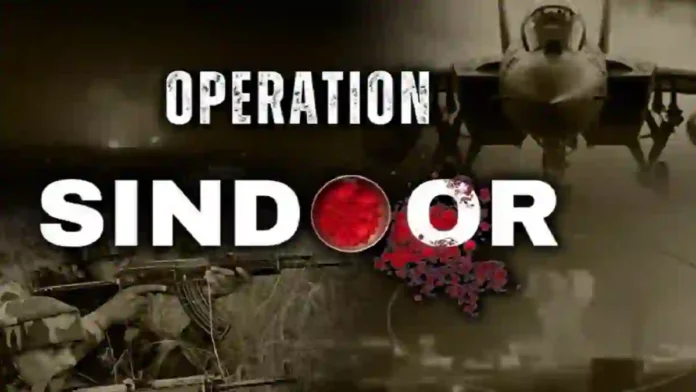During Operation Sindoor, conducted from May 7 to May 10, 2025, the Indian military inflicted tremendous damage on Pakistani military infrastructure and capabilities, as confirmed by multiple senior Indian defence officials. The operation was a swift and technologically advanced retaliation for the Pahalgam terror attack, involving coordinated precision strikes across Pakistan and Pakistan-Occupied Kashmir (PoK).
Key Aspects And Outcomes
Scale And Intensity: The conflict spanned 88 hours, during which Indian forces executed deep strikes targeting terror infrastructure and military assets. According to Air Marshal Ashutosh Dixit, Chief of Integrated Defence Staff (CISC), the scale of damage was such that “no self-respecting nation or armed forces will capitulate in such a short time,” highlighting the operation’s decisive impact.
Targeted Strikes: Indian forces destroyed at least three major military posts, an ammunition depot, a fuel storage facility, and gunnery positions in Leepa Valley (PoK). Nine terror camps in Pakistan and PoK were also destroyed. The Chinar Corps led these strikes, and it is estimated that it will take Pakistan 8 to 12 months to rebuild the damaged sites.
Casualties And Material Losses: Indian assessments, based on multiple intelligence sources, estimate that 64 Pakistani military personnel were killed and 96 injured during the strikes in Leepa Valley alone. Additionally, the Indian Air Force (IAF) shot down four Pakistani fighter jets (all Chinese-origin platforms), two large surveillance aircraft (including F-16s and a SAAB 2000 AEW&C), and struck 13 Pakistani airbases, causing severe damage to runways, radar systems, and fuel depots.
Financial And Strategic Impact: The total estimated damage inflicted on Pakistan exceeds $7.6 billion, severely degrading its military infrastructure and operational capabilities.
Operational Excellence: The operation showcased the Indian military’s advancements in integration, jointness, and coordination—efforts that began post-Kargil and culminated in Operation Sindoor. Target selection, intelligence planning, and execution were described as highly effective and were supported by indigenous platforms and air defence systems.
Read- Why India Should Acquire Russia’s Advanced S-500 Air Defence System
Technological Edge: The use of advanced surveillance, drones, and long-range precision weapons (including BrahMos and SCALP missiles) enabled India to strike deep targets, sometimes up to 41 km inside Pakistani territory. The Akashdeep radar system and air defence guns successfully neutralised Pakistani aerial threats, ensuring Indian infrastructure remained intact.
Strategic Shift: Air Marshal Dixit emphasized that the threshold for military response has been redefined and India’s deterrence level is now set “at a very high level.” The operation demonstrated India’s ability to deliver decisive responses at a time and place of its choosing, establishing a new “normal” in regional military posture.
Lessons Learned: Key takeaways for the Indian military include the importance of non-linear, simultaneous responses, the value of long-range strike capabilities, and the necessity of joint training and integration to operate effectively in the “fog of war”.
Augmented Planning
The Indian military achieved significant damage in just 88 hours during Operation Sindoor through a combination of advanced technology, precise intelligence, integrated joint operations, and a clear strategic doctrine.
Other key factors enabling this rapid and decisive impact included:
Precision, Intelligence-Led Strikes: The operation was meticulously planned and executed using real-time intelligence from layered ISR (Intelligence, Surveillance, Reconnaissance) systems, including satellite imagery, HUMINT, and SIGINT. This allowed Indian forces to select high-value targets—such as airbases, terror camps, and command centres—with surgical accuracy, minimizing collateral damage and maximizing operational effect.
Read- Who is Parag Jain, India’s New RAW Chief
Use of Advanced Stand-off Weapons: The Indian Air Force deployed a composite air package of Rafale, Sukhoi-30MKI, and Mirage-2000 fighters, launching BrahMos cruise missiles and other stand-off munitions. These weapons enabled deep strikes into Pakistani territory without exposing Indian aircraft to enemy air defences, crippling key Pakistani military infrastructure and grounding multiple squadrons.
Integrated Command And Control: The operation showcased unprecedented jointness among the Army, Navy, and Air Force, facilitated by the Integrated Defence Staff and real-time coordination through systems like the Integrated Air Command and Control System. This ensured synchronized multi-domain operations, rapid threat identification, and effective neutralization of Pakistani retaliatory attempts, including drone and UCAV attacks.
Operational Freedom And Political Clarity: The armed forces were granted full operational freedom, allowing them to act swiftly and decisively. The government’s clear articulation of a “new normal” in national security policy empowered the military to escalate operations as needed, while still drawing a clear finish line to avoid prolonged conflict or nuclear escalation.
Technological Superiority: India’s use of advanced air defence systems (such as the S-400), electronic warfare, and indigenous platforms enabled the neutralization of Pakistani aerial threats and the destruction of critical assets, including airborne early warning systems and advanced air defence batteries.
Synergy And Joint Planning: Years of investment in jointness and integration, especially since the Kargil conflict, culminated in seamless coordination across services. This operational synergy was central to the rapid and effective execution of the campaign.
Operation Sindoor stands out as a landmark in modern Indian military history, both for the scale of damage inflicted on the adversary and for the demonstration of India’s enhanced operational integration, technological prowess, and strategic resolve. The 88 hours of conflict not only resulted in substantial material and personnel losses for Pakistan but also signalled a significant shift in the regional balance of power and deterrence.
Based On PTI Report
Agencies




